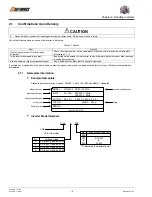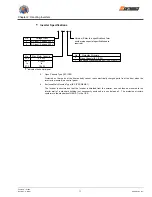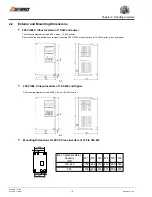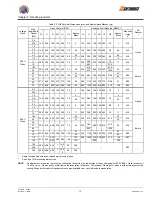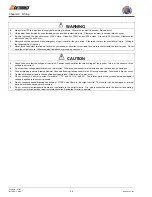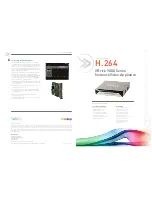
Chapter 1: Introduction
Firmware – S1043
Revision: 2 (9/98)
4
© Saftronics, Inc.
Any of the above frequency references can be used by setting a constant.
A maximum of nine frequency references can be registered with the Inverter. With remote multi-step speed
reference inputs, the Inverter can operate in multi-step speed operation with a maximum of nine speed steps.
§
PID Control
The Inverter has a PID control loop for easy process control. Process control is an operational method in which the
Inverter varies the output frequency to match the feedback value from the sensor to a set target value.
Process control can be applied to a variety of operations, such as those listed below, depending on the variable
detected by the sensor.
•
Speed Control:
With a speed sensor, such as tach generator, the Inverter regulates the rotating speed
of the motor regardless of the load on the motor or synchronizes the rotating speed of
the motor with that of another motor.
•
Pressure Control:
With a pressure sensor, the Inverter performs constant pressure control.
•
Flow-Rate Control:
By sensing the flow-rate of a fluid, the Inverter performs precise flow-rate control.
•
Temperature Control:
With a temperature sensor, the Inverter performs temperature control by fan speed.
§
Zero Servo Control
Zero Servo control is effective with flux vector control. Even at a motor speed of zero (0 Hz), a torque of 150% of the
motor’s rated torque can be generated and the average servomotor holding power (stopping power) can be obtained.
§
Speed Control by Feedback
Speed control using feedback is effective with a PG. An optional PG Speed Option Card can be used to enable
feedback control for speeds, thereby improving speed control accuracy.
§
Dwell Function
By holding the output frequency for a constant time during acceleration and deceleration, acceleration and
deceleration can be performed without stepping out even when driving a motor with a large startup load.
§
Low Noise
The output transistor of the Inverter is an IGBT (Insulated Gate Bipolar Transistor). Using sine wave PWM with a
high frequency carrier, the motor does not generate metallic noise.
§
Monitor Function
The following items can be monitored with the Digital Operator: frequency reference, output frequency, output
current, motor speed, output voltage reference, main-circuit DC voltage, output power, torque reference, status of
input terminals, status of output terminals, operating status, total operating time, software number, speed deviation
value, PID feedback value, fault status, fault history, etc.
All types of data can be monitored even with multi-function analog output.
§
Bilingual Digital Operator
The Digital Operator can display either English or Japanese. The Digital Operator’s liquid crystal display provides a
16 character by 2-line display area.
Easy-to-read displays allow the advanced functions of the Inverter to be set in interactive operations to input
constants, monitoring items, etc. Change the constant setting to select the English display.
§
Harmonic Countermeasures (0.4 to 160 kW Models)
The VG5 Inverters up to 160 kW support DC Reactors to easily handle high frequency control guidelines.
•
DC Reactors (optional) can be connected to 0.4 to 15 kW models.
•
Models from 18.5 to 160 kW have a built-in DC reactor.
•
An optional AC reactor can be connected to Inverters from 185 to 300 kW.





















